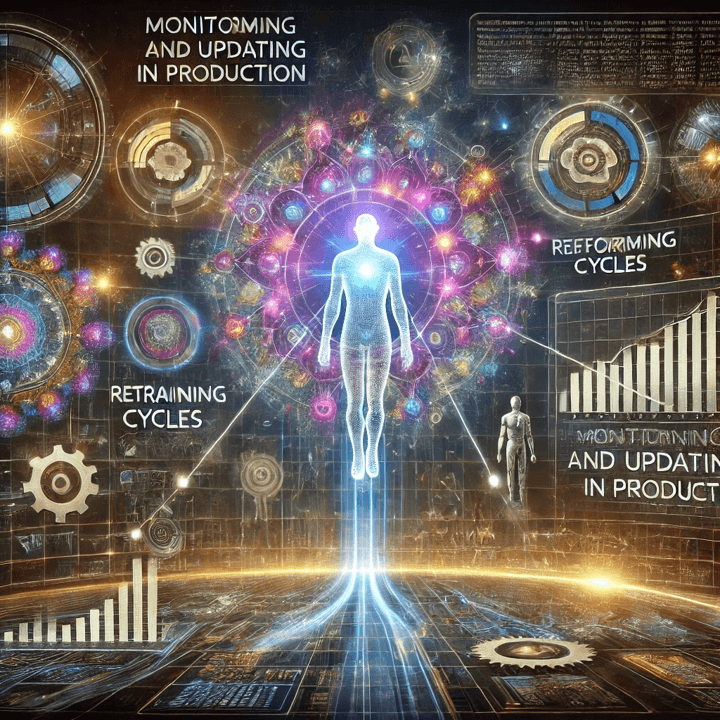Agentic Process Automation: Redefining the Future of White-Collar Work.
The New Automation Frontier
Automation has historically targeted repetitive, manual labor—assembly lines or textile manufacturing. By 2020, McKinsey estimated that 30% of tasks in 60% of occupations could be automated using existing technologies, predominantly impacting blue-collar roles. However, the rise of Agentic Process Automation (APA) signals a paradigm shift. Unlike rigid, scripted tools like Robotic Process Automation (RPA), APA leverages autonomous AI agents capable of decision-making, learning, and reinventing workflows. Gartner predicts that by 2026, 50% of knowledge work tasks will be augmented or automated by AI-driven systems, with APA at the forefront. This post explores how APA’s unique capabilities are poised to disrupt traditional white-collar professions, redefine industries, and unlock unprecedented value.
- Autonomous Intelligence: Beyond Scripted Automation
Traditional automation follows predefined rules (e.g., RPA for invoice processing). APA, however, deploys AI agents that interpret context, solve novel problems, and act in real time.
Example: A global bank uses APA-powered agents to handle complex loan approvals. Instead of merely checking credit scores, the system analyzes real-time market data, borrower behavior patterns, and regulatory changes to adjust risk models dynamically. This reduced approval times by 40% while cutting defaults by 15%.
Accenture reports that 87% of executives believe AI-driven decision-making will revolutionize their industries within three years.
Impact: Roles like financial analysts, underwriters, and compliance officers will transition from manual data crunching to overseeing AI systems and refining strategic inputs.
- Dynamic Evolution: The Self-Optimizing Enterprise
APA systems continuously learn from data streams, adapting to disruptions without human intervention.
Example: During the 2021 Suez Canal blockage, a logistics firm using APA rerouted 500+ shipments in real time by analyzing weather data, port congestion, and fuel costs. The system self-optimized routes, saving $12 million in potential delays.
A Boston Consulting Group study found self-optimizing supply chains reduce operational costs by 25–30% while improving delivery accuracy.
Impact: Supply chain managers and operations planners will shift from firefighting disruptions to designing adaptive frameworks for APA systems.
- End-to-End Reinvention: Shattering Organizational Silos
APA doesn’t just automate tasks—it reengineers entire ecosystems. By integrating siloed functions (e.g., HR, finance, R&D), it unlocks systemic innovation.
Example: A pharmaceutical company used APA to unify drug discovery, clinical trials, and regulatory compliance. The AI identified a cancer drug candidate by cross-referencing genomic data and trial histories, accelerating time-to-market by 18 months.
Deloitte estimates that siloed operations cost enterprises 20–30% in lost revenue annually. APA’s holistic approach could recover much of this value.
Impact: Middle managers and department heads will transition from enforcing siloed workflows to orchestrating cross-functional APA initiatives.
- Exponential Growth Engine: From Cost-Cutting to Value Creation
APA’s predictive analytics identify untapped markets and revenue streams.
Example: Netflix’s AI-driven content recommendation engine, powered by APA principles, influences 80% of viewer choices, contributing to its 31 billion annual revenue. Similarly, retailers like StitchFix use APA to predict fashion trends, generating 2.1 billion in 2022 revenue through hyper-personalization.
PwC forecasts AI could contribute $15.7 trillion to the global economy by 2030, with APA-driven growth accounting for 45% of this figure.
Impact: Marketing and sales teams will pivot from manual campaign execution to interpreting APA-generated insights for strategic branding.
- Human-AI Symbiosis: Elevating Creativity and Strategy
APA handles operational complexity, freeing humans for high-value work.
Example: JPMorgan’s COiN platform automates 360,000 hours of legal document review annually, allowing lawyers to focus on litigation strategy and client counseling.
A Stanford study found that AI augmentation boosts knowledge worker productivity by 34% while increasing job satisfaction.
Impact: Professionals in law, consulting, and engineering will prioritize creativity, ethics, and stakeholder collaboration over routine tasks.
- Paradigm Shift: Cognitive Operations Replace Digital Tools
APA marks the transition from tools that assist humans (e.g., CRM software) to autonomous systems that drive business outcomes.
Example: Salesforce’s Einstein GPT autonomously generates sales pipelines, predicts customer churn, and drafts contracts—tasks once requiring teams of analysts.
IDC predicts 65% of enterprises will adopt “cognitive operations” by 2025, rendering legacy software obsolete.
Impact: IT departments will evolve from maintaining systems to governing AI ethics and integration.
- Scalable Resilience: Turning Volatility into Advantage
APA thrives in uncertainty by autonomously pivoting strategies.
Example: During the COVID-19 pandemic, Unilever used APA to shift 60% of its marketing budget to digital channels in real time, capturing emerging e-commerce demand and boosting sales by 5.8% in 2020.
McKinsey notes that resilient companies using AI-driven automation achieved 3x faster recovery post-crisis compared to peers.
Impact: Executives will rely on APA for scenario planning, shifting from reactive leadership to guiding AI-augmented strategies.
Implications for the Workforce: Challenges and Opportunities
While APA displaces routine tasks (e.g., data entry, reporting), it creates demand for roles like:
- AI Trainers: Curating datasets and refining agent behavior.
- Symbiosis Designers: Architecting human-AI collaboration frameworks.
- Ethics Auditors: Ensuring transparency and compliance.
The World Economic Forum estimates 97 million new roles will emerge in AI-augmented economies by 2025.
Agentic Process Automation isn’t just an upgrade—it’s a reimagining of how businesses operate. Organizations that embrace APA will lead in agility, innovation, and resilience, while laggards risk obsolescence. The future belongs to enterprises (and professionals) that view AI not as a tool, but as a collaborative partner in shaping the cognitive economy.

